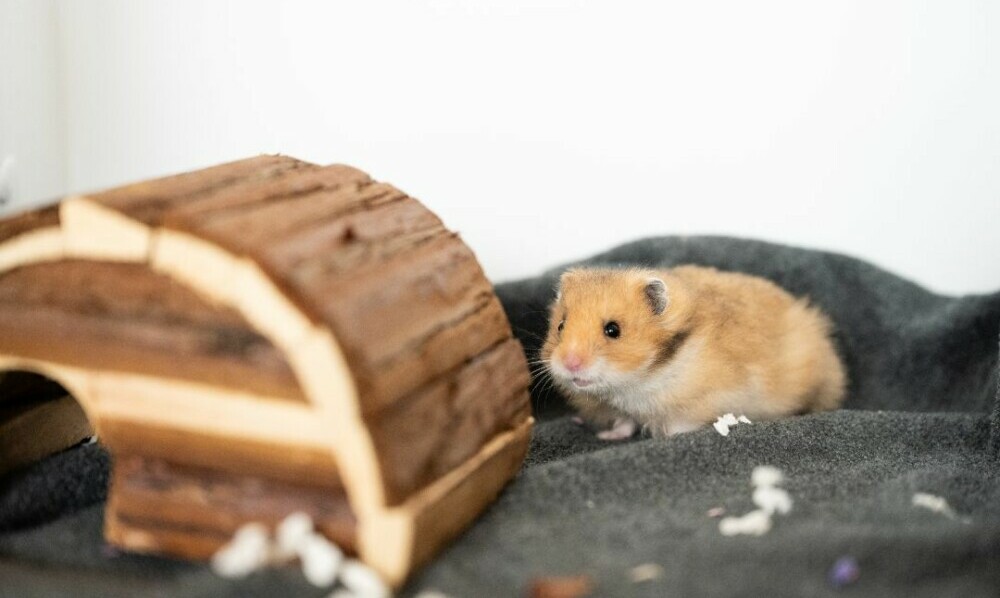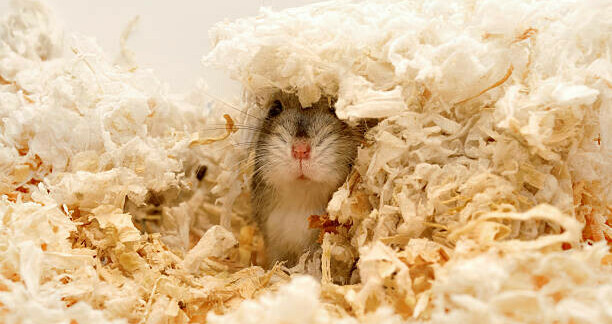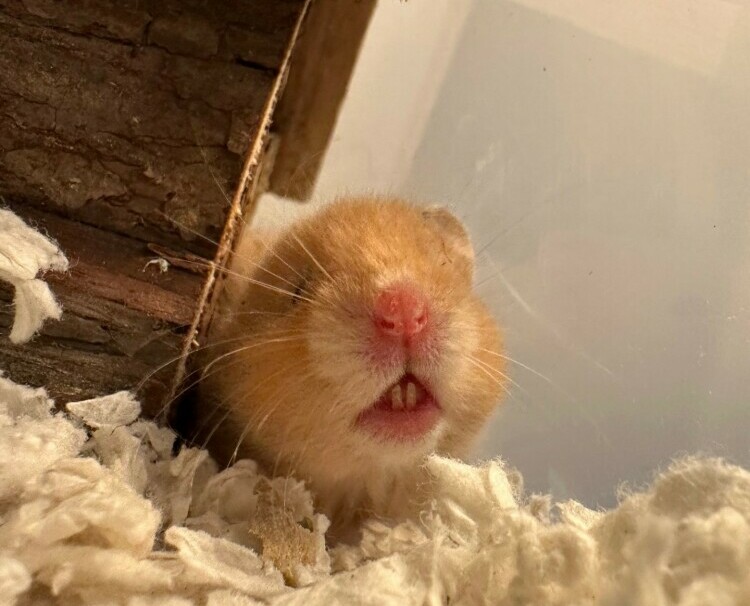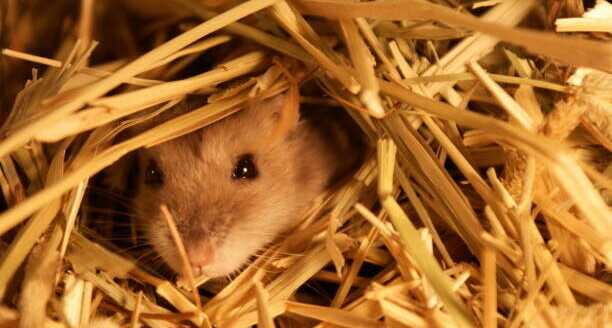If you want to help your shy or fearful hamster become more at ease around you, it all starts with the place they call home. A safe, tranquil environment is crucial to make your tiny pet feel protected and reduce their stress levels. Here’s how to create that cosy haven your hamster needs.
First off, let’s talk about location. Find a quiet corner of your home, away from the hustle and bustle, where your hamster’s cage can sit undisturbed. Even the vibration from a loud TV or the unexpected swoosh of a vacuum cleaner can spike a hamster’s anxiety. A consistent, calm environment helps your hamster understand that their home is a retreat from any potential chaos in the household.
When setting up the cage, think ‘safety first.’ A hamster’s instinct is to hide from anything unfamiliar or intimidating, so a cage without hiding spots is like a horror movie for these little critters. Provide tunnels, huts, and nesting materials where your furry friend can burrow and retreat to whenever they feel overwhelmed. It’s like giving them a personal fortress where they can regroup and recharge.
Choosing the right bedding is also a game-changer for your hamster’s comfort. Softer, unscented, and dust-free options can prevent respiratory issues and provide a snug surface for your hamster to nestle into. Now, you’ve got the stage set for a peaceful environment, which paves the way for gradual, positive interactions.
With a secure base in place, you’re ready to move on to the next big step: giving your hamster the necessary time to adjust. In the following section, I’m going to help you understand the art of patience as you embark on this journey together.

The Art of Patience: Easing into Interaction
Just don’t focus too much on perfection when it comes to handling a shy or fearful hamster right away. Think of it as a slow dance, where you’re both learning the steps. The initial phase after bringing your little friend home is critical. They’re not just cute furballs; they’re sentient beings who experience stress. The key during this period is to let them settle in. They need their space, and believe me, it’s not because they’re not fond of you. It’s simply their natural instinct to be wary in a new environment.
Now, minimal handling in the first few days is not neglect; it’s actually a form of respect. Hamsters, like many other animals, can get overwhelmed by too much too fast. There’s a lot of opportunity in this adjustment period for your hamster to start feeling at home. Just be around them without direct interaction. You can talk in a soothing tone or simply hang out nearby. This lets your furry pal get used to your presence without the pressure of being touched. Trust me, your voice is going to become a comforting sound to them.
So my question to you today is, how can you further streamline this phase? Easy. It’s all about creating a predictable and safe routine. Feeding at the same times, changing water, and gentle cage cleaning—without the added stress of trying to pet or hold them—will familiarize them with your patterns. Building trust with a shy hamster is about showing them you’re not a threat through your calm and predictable actions.
If you’re wondering when to start trying to handle your hamster, just observe. They’ll show you when they’re ready. Don’t rush it. This isn’t just about teaching your hamster that being held is okay; it’s also about learning to respect their timing and comfort levels. Consistency and patience here will pay off big time. So remember, let them take the lead on when to move to the next step. That’s what sets the stage for a successful gradual introduction.

Fostering Comfort: Understanding Hamster Psychology
When it comes to handling a shy or fearful hamster, it’s not just about getting them used to your touch, it’s also about understanding their psychological needs. Hamsters, by nature, are prey animals, and this has a significant impact on how they perceive the world around them. Quick movements or direct approaches can be intimidating, so it’s crucial that you move slowly and give them the autonomy to approach you when they’re ready.
Start with your hand. Place it inside the cage, palm upward, and let it rest there. This allows your hamster to investigate at their own pace, sniffing and even climbing onto your hand without the fear of being grabbed. It’s a form of non-threatening introduction that can significantly reduce stress for your hamster. In my experience, patience here can pay off tremendously – often, curiosity will overcome fear, leading to those first, heartwarming instances of trust.
Next, consider the timing and frequency of your interactions. Your aim is to create a routine that your furry friend can anticipate. Try to be present around their cage at the same times every day. If evening is when they’re most active, that’s the perfect opportunity to sit by the cage and talk to them. Over time, your consistent presence will become a comforting staple in their day.
Remember, any interaction should be on their terms, especially in the beginning stages. If they retreat to a hiding spot, allow them the peace they’re seeking. It’s better to limit the interaction on a positive note than to overdo it and cause a backslide in trust. And don’t worry too much about setbacks – they’re natural and can be part of the learning process for both of you.

Cultivating Confidence: Positive Reinforcement and Consistency
The journey to bond with a shy or fearful hamster is about small steps and big rewards. It’s not just about overcoming their initial fear; it’s also about building an enduring sense of trust. When you reach the point where your hamster scurries over to greet you, know that you’ve done something truly remarkable.
Incorporate treats and verbal praise to celebrate your hamster’s brave moments. Every time they inch closer, allow you to pet them, or take a treat from your hand, offer a morsel of their favorite snack as a token of your shared success. This isn’t bribery—it’s positive reinforcement, a proven method to reinforce their trust in you.
Remember, creating a bond with your hamster doesn’t happen overnight. I really hope that you have the patience to see this through because it’s going to be so rewarding in the end. Consistency is your ally here, with routine serving as the foundation for a lasting friendship. Try to maintain a regular schedule for your interaction sessions; this predictability is greatly reassuring to your furry companion.
Not every day is going to be a step forward; hamsters, much like us, have their own personalities and bad days. If you’re facing a setback, don’t worry too much about it. Take a deep breath, give your pet some space, and try again later. Adjust your approach based on their cues, and always prioritize their comfort.
Handling a shy or fearful hamster is a delicate dance of empathy and care. Choose something that resonates with both you and your hamster when it comes to handling techniques, be it luring them with treats or patiently waiting for them to approach. And hey, when those sweet moments of connection finally happen, it’s pure magic. You’ll see that the trust you’ve built is not just about holding your pet; it’s about understanding and respecting a tiny, but mighty, life.


2 replies on “Handling A Shy Or Fearful Hamster”
I have been a pet owner most of my life. My pets have always been dogs until now, I recently moved into an apartment where dogs and cats are not allowed. Being an animal lover, I am not happy living alone without an animal companion.
After reading your article on handling a shy or fearful hamster, I am considering this as a new pet. With you sharing how to create an environment for a happy hamster, I am feeling more confident this could be a good pet for me.
You have provided an awesome guide on getting started by providing them a happy home, I also found all your tips on easing into interaction to be very valuable information to know.
Do you think adding a couple of hamsters might be better than just one?
Jeff
Thank you for reaching out with your question about whether it’s better to keep multiple hamsters or just one. The answer depends on the species of hamster you’re considering.
Syrian Hamsters
Syrian hamsters are strictly solitary animals. They can become very territorial and aggressive if housed with other hamsters, even from a young age. Therefore, it’s best to keep Syrian hamsters alone to ensure their well-being and safety.
Dwarf Hamsters
Dwarf hamsters, including species like Campbell’s, Winter White, and Roborovski, can sometimes be kept in pairs or small groups, but it’s not without risks. Even if they initially get along, conflicts can still arise. Be prepared to separate them if they start to fight.
General Tips
Introduction: If you decide to introduce a pair, do so gradually and in a neutral space to reduce territorial aggression.Multiple Cages: Always have a second cage ready in case separation becomes necessary.Observation: Keep a close eye on their interactions. Signs of aggression include chasing, biting, and persistent squeaking.
Ultimately, the decision to keep one hamster or multiple depends on your ability to manage the potential challenges. If you’re new to hamster care, starting with one hamster might be the best option.
I hope this helps! If you have any more questions or need further advice, feel free to ask.
Iris